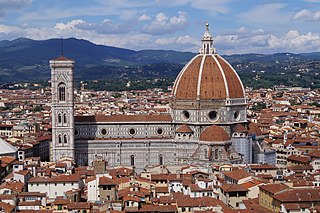Architecture
**Historical Development of Architecture:**
– Architecture has evolved through various stages, beginning with rural vernacular structures and progressing to ancient urban and classical eras.
– Notable historic treatises by Vitruvius, Alberti, Serlio, and Pugin emphasized principles of durability, utility, and beauty in architecture.
– European medieval architecture, Renaissance architecture, and early modern and industrial age architecture showcase distinct styles and influences.
– The impact of the Industrial Revolution led to changes in architectural practices and the revival of classical styles.
– The evolution of architecture reflects the dynamics between human needs, available materials, and cultural influences.
**Architectural Theory and Concepts:**
– Architectural theory explores the relationship between aesthetics, semantics, and cultural development in architecture.
– Philosophers and theoreticians have pondered on the nature of architecture, emphasizing aesthetic value and cultural significance.
– Modern concepts in architecture include the principles of ‘Form follows function,’ sustainable architecture, and influences from Rationalism, Empiricism, and Structuralism.
– Louis Sullivan’s concept of ‘Form follows function’ and the consideration of practical, aesthetic, and cultural aspects in architecture are key concepts.
– Sustainability factors in architecture encompass materials, energy use, water use, waste management, and lighting design.
**Architectural Styles and Movements:**
– Architecture has seen the emergence of different styles and movements such as modernism, postmodernism, and contemporary architecture.
– Modern architecture, postmodernism, and contemporary architecture emphasize modern techniques, materials, geometric forms, and a response to modernism.
– The Bauhaus School, International Style, and Brutalism are examples of architectural movements that have influenced design trends.
– Postmodern architecture combines contemporary technology with older aesthetics, emphasizing decorative richness and metaphoric design.
– Architectural phenomenology and the complexity of buildings in contemporary architecture reflect the diverse influences and trends in the field.
**Cultural and Regional Architecture:**
– Architecture across different regions and cultures showcases unique characteristics and influences.
– Asian architecture, including Indian, Chinese, and Japanese styles, exhibits distinct architectural elements and historical significance.
– European medieval architecture, Renaissance architecture, and classical era architecture highlight regional styles and iconic structures.
– Vernacular architecture in regions like Norway, Lesotho, Ireland, and Romania reflects traditional building methods and materials.
– Prehistoric architecture, classical era architecture, and early settlements demonstrate the evolution of architectural styles in different regions.
**Contemporary Trends and Architectural Practices:**
– Architecture today has become multi-disciplinary, with specialized expertise and a focus on environmental sustainability.
– Different types of architecture, including residential, commercial, industrial, landscape, and interior architecture, cater to specific needs and design requirements.
– The complexity of buildings has increased, leading to more intricate preparatory processes and a separation between design architect and project architect roles.
– Residential architecture focuses on functional design within building codes, while commercial architecture serves the needs of businesses and institutions.
– Landscape architecture designs outdoor spaces for various outcomes, and interior architecture considers structural boundaries and human interaction in space design.
Architecture is the art and technique of designing and building, as distinguished from the skills associated with construction. It is both the process and the product of sketching, conceiving, planning, designing, and constructing buildings or other structures. The term comes from Latin architectura; from Ancient Greek ἀρχιτέκτων (arkhitéktōn) 'architect'; from ἀρχι- (arkhi-) 'chief', and τέκτων (téktōn) 'creator'. Architectural works, in the material form of buildings, are often perceived as cultural symbols and as works of art. Historical civilisations are often identified with their surviving architectural achievements.

The practice, which began in the prehistoric era, has been used as a way of expressing culture by civilizations on all seven continents. For this reason, architecture is considered to be a form of art. Texts on architecture have been written since ancient times. The earliest surviving text on architectural theories is the 1st century AD treatise De architectura by the Roman architect Vitruvius, according to whom a good building embodies firmitas, utilitas, and venustas (durability, utility, and beauty). Centuries later, Leon Battista Alberti developed his ideas further, seeing beauty as an objective quality of buildings to be found in their proportions. In the 19th century, Louis Sullivan declared that "form follows function". "Function" began to replace the classical "utility" and was understood to include not only practical but also aesthetic, psychological, and cultural dimensions. The idea of sustainable architecture was introduced in the late 20th century.
Architecture began as rural, oral vernacular architecture that developed from trial and error to successful replication. Ancient urban architecture was preoccupied with building religious structures and buildings symbolizing the political power of rulers until Greek and Roman architecture shifted focus to civic virtues. Indian and Chinese architecture influenced forms all over Asia and Buddhist architecture in particular took diverse local flavors. During the Middle Ages, pan-European styles of Romanesque and Gothic cathedrals and abbeys emerged while the Renaissance favored Classical forms implemented by architects known by name. Later, the roles of architects and engineers became separated.
Modern architecture began after World War I as an avant-garde movement that sought to develop a completely new style appropriate for a new post-war social and economic order focused on meeting the needs of the middle and working classes. Emphasis was put on modern techniques, materials, and simplified geometric forms, paving the way for high-rise superstructures. Many architects became disillusioned with modernism which they perceived as ahistorical and anti-aesthetic, and postmodern and contemporary architecture developed. Over the years, the field of architectural construction has branched out to include everything from ship design to interior decorating.
